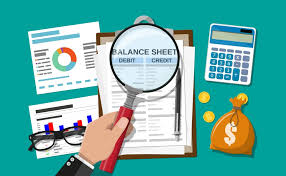The term "fixed capital" refers to the assets and investments in capital, such as "property, plant, and equipment," that is required to begin and continue running a firm, even at the most rudimentary level. The fact that these assets have a value that may be reused even though they are not consumed or destroyed in producing a thing, or service qualifies them as fixed assets. Depreciation of fixed-capital assets is often recorded on the company's financial accounts over an extended period—anywhere from five to twenty years or even more.
Understanding Fixed Capital
The political economist David Ricardo is credited with being the one who originally developed the notion of fixed capital in the 18th century. According to Ricardo, the term "fixed capital" may apply to any tangible asset not depleted in producing a good or service. Ricardo's concept of circulating capital, which includes things like labor, operational expenditures, and raw materials, was challenged by this argument. Within the framework of Marxian economics, the idea of fixed capital is intricately connected to that of constant capital.
Fixed capital is portion of a company's total capital outlay invested in tangible assets that remain in company's ownership for an extended period or, to put it another way, for more than one accounting period. These types of investments are considered to be long-term investments. A company can buy fixed assets outright and take ownership of them, or they may be arranged as a long-term lease.
The second half of the capital equation is "that which circulates" or "that which an organization consumes in the process of production." This includes items like salaries, supplies, and other operating costs. Marx argued that the distinction between the two types of capital is arbitrary since it depends on the relative turnover times of various physical capital assets. To put it another way, the difference is arbitrary.
Fixed capital also "circulates," but the turnover time is much greater since it might be many years or even decades before a fixed asset has surrendered its worth and is abandoned for its salvage value. Any time before a fixed asset's useful life ends, it is possible to resell it and put it to another use. This is something that often occurs with automobiles and aircraft.
You may compare and contrast fixed capital with variable capital, the cost and level of which alter with time and the magnitude of an organization's production. For example, equipment employed in the manufacturing process would be called fixed capital since it would stay with a firm regardless of the degree of production it was doing at the time. On the other hand, the cost of raw materials would change based on the production volume.

Fixed Capital Requirements
The initial fixed capital required to launch a company depends on several factors, most notably the sector in which the company will operate. Certain types of businesses call for a significant investment in their fixed-asset inventory. Manufacturers in the industrial sector, companies providing telecommunications services, and oil exploration companies are typical examples. Businesses that provide a service, such as accounting companies, often have lower requirements for their fixed capital expenditures. This may include office buildings, computers, networking devices, and other technology often seen in offices.
The acquisition of fixed capital may be a time-consuming process for production organizations. However, production businesses often have simpler access to the inventory required to develop the products being produced. It might take a considerable period for a company to obtain the finances essential for making bigger expenditures, such as investing in brand-new manufacturing facilities. If a firm decides to employ finance, obtaining appropriate loans may take some time. If a corporation has an equipment breakdown and does not have built-in redundancy, this may raise the risk of financial losses associated with poor output and can make it more likely that the company would incur those losses.
Depreciation of Fixed Capital

Investing in fixed capital often results in a depreciation pattern that differs from how it is represented on income statements. While some have an almost infinitely long useful life, others lose their worth quickly. For instance, the moment the title is formally transferred from the dealership to the new owner, the value of a brand-new automobile drops significantly. On the other hand, buildings held by the corporation could see a considerably slower rate of depreciation. The depreciation approach allows shareholders to view an approximate approximation of the value that the company's fixed-capital assets are adding to the company's performance at present.

Verizon Visa Signature Card Review 2023

War Bond: An Overview

The Top 5 Credit Card Options

Top-Rated Prepaid Credit Cards For Teenagers

What are the Steel Stocks

What Is Intermediate or Medium-Term Debt: A Comprehensive Guide 2023

Are Mortgages Available for Mobile Homes?

What is Walmart Money Card

What Is An Entity Of A Business?

Fixed Capital: An Overview

What Is A Planner For Retirement?
